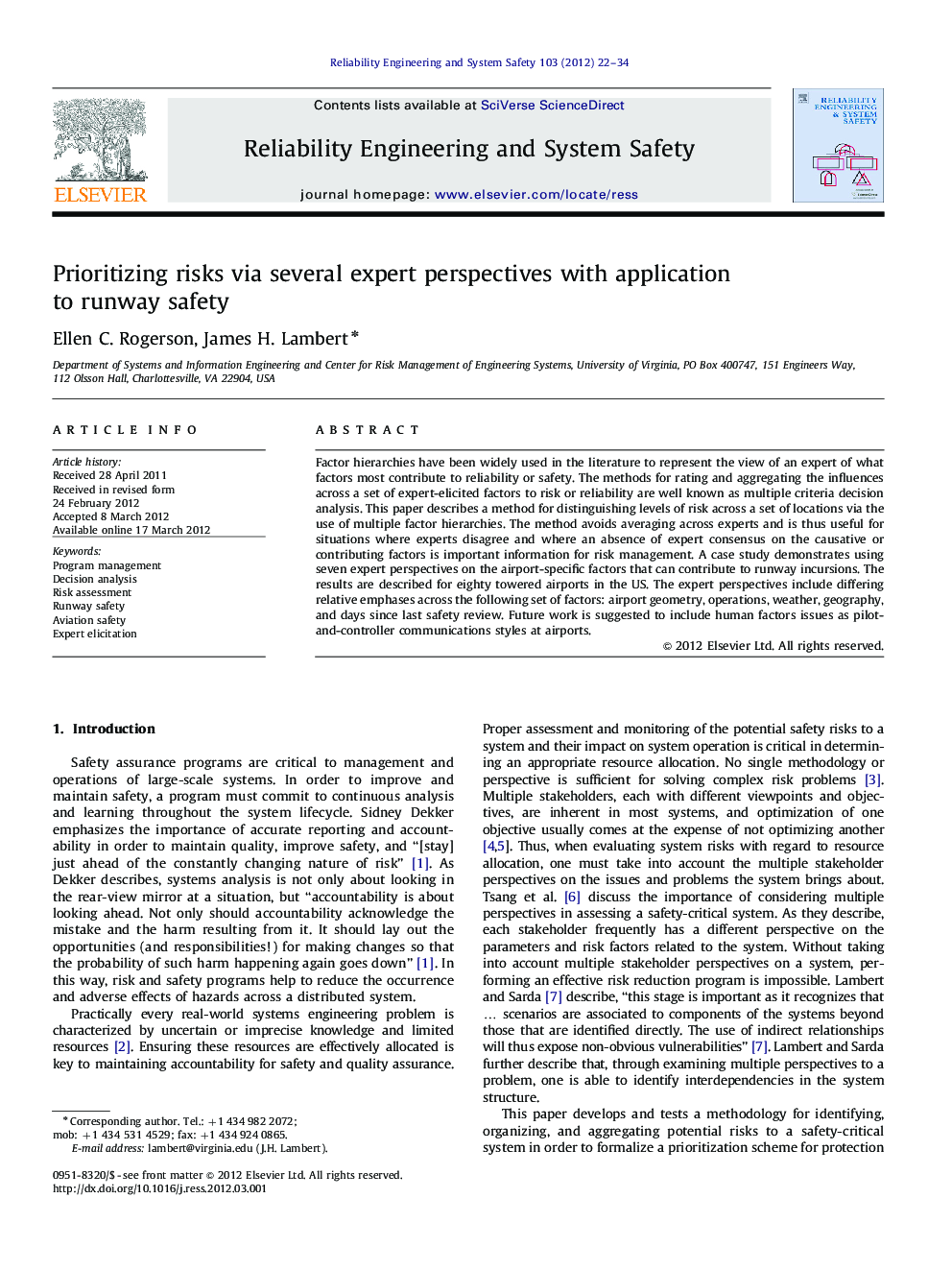| Article ID | Journal | Published Year | Pages | File Type |
|---|---|---|---|---|
| 805742 | Reliability Engineering & System Safety | 2012 | 13 Pages |
Factor hierarchies have been widely used in the literature to represent the view of an expert of what factors most contribute to reliability or safety. The methods for rating and aggregating the influences across a set of expert-elicited factors to risk or reliability are well known as multiple criteria decision analysis. This paper describes a method for distinguishing levels of risk across a set of locations via the use of multiple factor hierarchies. The method avoids averaging across experts and is thus useful for situations where experts disagree and where an absence of expert consensus on the causative or contributing factors is important information for risk management. A case study demonstrates using seven expert perspectives on the airport-specific factors that can contribute to runway incursions. The results are described for eighty towered airports in the US. The expert perspectives include differing relative emphases across the following set of factors: airport geometry, operations, weather, geography, and days since last safety review. Future work is suggested to include human factors issues as pilot-and-controller communications styles at airports.
► We examine influential factors in seven expert perspectives on the problem domain. ► We assess eighty US airports with qualitative measurement scales for each risk factor. ► Results show robustness and sensitivity of the risk index to expert perspective. ► We examine factors of several types including runway geometry, operations, weather, and geography.
